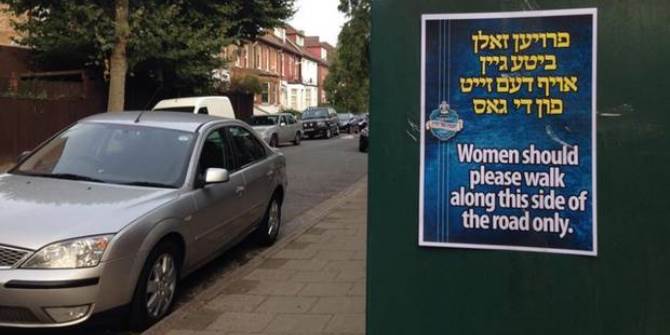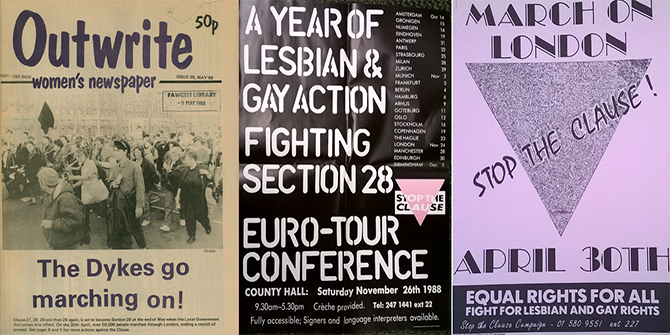 Even a cursory review of the relevant case law suggests that, on the whole, the courts have taken an uninformed and dismissive attitude towards the prejudicial effect of rap music, writes Abenaa Owusu-Bempah. Such attitudes mean that prosecutors are able to rely on and reinforce racist stereotypes about Black young men and boys.
Even a cursory review of the relevant case law suggests that, on the whole, the courts have taken an uninformed and dismissive attitude towards the prejudicial effect of rap music, writes Abenaa Owusu-Bempah. Such attitudes mean that prosecutors are able to rely on and reinforce racist stereotypes about Black young men and boys.
In recent years, a number of high-profile rappers, including Unknown T and Loski, have seen prosecutors use, or attempt to use, their music as evidence against them at a criminal trial. This is part of a growing trend of ‘Prosecuting Rap’, aided by easy access to lyrics and music videos through phones, social media and YouTube, and exacerbated by the recent moral panic over drill music (a hip-hop subgenre). The full extent of the trend is not known. But my initial analysis of 30 appeal judgments, reported between 2005 and 2020, paints a worrying picture about the way in which rap music is used in court.
Rap, race and gangs
The case law shows that lyrics and music videos are used almost exclusively as evidence against Black young men and boys accused of serious offences in urban areas – usually London. This indicates a deliberate tactic, whereby prosecutors are able to draw on stereotypical narratives to construct case theories. In other words, prosecutors can use lyrics and videos to tell a story of a dangerous rapper that reflects longstanding stereotypes about Black males as criminals. In doing so, elements of Black youth culture are conflated with serious offending. We see this also in the link to gangs.
The majority of cases were said to be gang related. In most of these cases, lyrics or music videos were used as evidence of gang association, which was then used to link the defendant to the crime. For example, in the case of R v Sode [2017] EWCA Crim 705, one of the defendants had appeared in a ‘rap video’ two years before a shooting, when he was just 14 years-old. In the video, he made gestures and remarks said to be consistent with support for a gang. This was used as evidence of gang affiliation and, in turn, motive for murder.
The term ‘gang’ is itself controversial. It lacks a precise definition and has been heavily racialised. Black people are grossly overrepresented on gang databases, sometimes for simply being related, or living in close proximity, to suspected gang members. Such disproportionate application equips the term ‘gang’ with the ability to evoke stereotypical images of Black criminality. Rap music can then be used to amplify these images in order to link Black men and boys to crime.
Rap as character evidence
Rap music is usually presented in court as ‘bad character evidence’. The Criminal Justice Act 2003 defines bad character evidence as evidence of, or of a disposition towards, ‘misconduct’ – misconduct being the commission of an offence or other reprehensible behaviour. Writing or performing lyrics can be an offence if, for example, they include specific threats or incite violence. But, in the cases analysed, the lyrics and videos themselves were not the offence. Rather, rap lyrics and participation in music videos was presented as reprehensible behaviour to help prove that the defendant committed a crime, most commonly a firearms offence, serious assault or murder.
To label violent and inflammatory rap lyrics as ‘misconduct’ is to misunderstand and vilify the genre. We don’t usually consider it misconduct to write or perform violent folk, rock or pop lyrics. Nor do we consider it misconduct to write graphic crime novels, violent plays or films, or even to play violent video games. So why is it reprehensible to partake in a genre known for its figurative language, use of metaphors, symbolism and exaggerations? Why are prosecutors asking courts and juries to take rap music literally and conflate art with character in a way that would be unthinkable with other art forms? The most obvious answer takes us back to the point made above: because it plays into racist stereotypes which help prosecutors construct case theories.
It is, therefore, all the more alarming that challenges to the use of rap music in court are rarely successful. Of the cases analysed, there was just one successful challenge. In R v Alimi [2014] EWCA Crim 2412, a conviction for firearms offences was quashed because the defendant’s mere presence in the background of two music videos did not show gang membership, as the prosecution suggested it did. However, the Court of Appeal had no doubt that lyrics had been properly allowed as evidence against two co-defendants, who had rapped about the ‘glorification of violence and guns’.
Relevance and prejudicial effect
Only evidence which can help to prove or disprove an issue in the case can be presented to a jury. In rap cases, lyrics and music videos are often used to help prove a defendant’s intention, motive, or to disprove a defence. For example, if the defendant claims that their presence at the scene of an attack was innocent or coincidental, the prosecution might rely on a video of the defendant rapping about violent behaviour to show an interest in violence and, therefore, that the defendant took part in the attack.
Because storytelling, symbolism, metaphors and boasting are integral to rap music (and because violent content sells), rap lyrics and videos should not be taken at face value in this way. But since the courts do allow rap music to be treated as literal and autobiographical, several factors should be considered before declaring it relevant. These factors include: the extent of the defendant’s involvement (did they write the lyrics, perform them or merely show support or enthusiasm in a music video?); the age of the lyrics or videos (was the material created days, weeks, months or years before or after the crime?); and perhaps most importantly, whether the lyrics reference the specific crime at issue. Unfortunately, the case law reveals an inconsistent approach to the assessment of these factors, while making it clear that lyrics do not have to be (and very rarely are) directly connected to the crime charged.
With few exceptions, the case law also shows little concern for how rap music might prejudice a jury against the defendant. Even if evidence is relevant, it should not be relied on if its value in proving an issue is outweighed by its ‘prejudicial effect’. The potential for prejudicial effect cannot be overstated when it comes to rap music. Jurors may believe that violent or inflammatory lyrics are far stronger evidence of guilt than they actually are, perhaps because of a lack of understanding of conventions in rap music, or perhaps because the evidence plays into preconceived notions about Black people as criminals.
Several American studies, where there is a longer (and larger) history of putting ‘Rap on Trial’, have found bias against rap music, rooted in racial stereotypes. In Fried’s 1999 study, two groups of participants were given identical violent lyrics. The group that believed the lyrics were from a rap song rated them as more objectionable, dangerous and in need of regulation than the group that believed the lyrics were from a country song. The same results were produced when, instead of referring to a musical genre, participants were presented with photos of the singer, with more negative responses when the singer was thought to be Black than white. More recently, in a 2018 study by Dunbar and Kubrin, participants were ‘more likely to assume that a rapper is in a gang, has a criminal record, and is involved in criminal activity than are artists from other music genres, and this is based merely on the genre of the lyrics’. These studies reveal how easily rap music can be used by prosecutors to reinforce biases and preconceived notions of Black criminality.
Yet, in the analysed cases, jurors were trusted to put emotion aside and decide for themselves whether rap music is ‘part of art or part of life’ (R v O [2010] EWCA Crim 2985). While the judge must provide directions on the legal issues in the case, there is no requirement that the judge (or anyone else) explain to the jury the culture, artistic conventions or social influences of rap music. Without this context, it is difficult to see how defendants can be protected against undue bias.
Even a cursory review of the case law suggests that, on the whole, the courts have taken an uninformed and dismissive attitude towards the prejudicial effect of rap music, while vastly overestimating its probative value. Prosecutors are able to rely on racist stereotypes and imagery about Black young men and boys, inviting a literal interpretation of rap music with little to no appreciation or understanding of the genre. The potential consequences are obvious: wrongful convictions and the further overcriminalisation of Black people. Anyone who genuinely believes that Black lives matter should be seriously concerned about what is happening in our courtrooms.
____________________
 Abenaa Owusu-Bempah is Assistant Professor of criminal law and criminal evidence at the LSE.
Abenaa Owusu-Bempah is Assistant Professor of criminal law and criminal evidence at the LSE.
Photo by Rob Sarmiento on Unsplash







